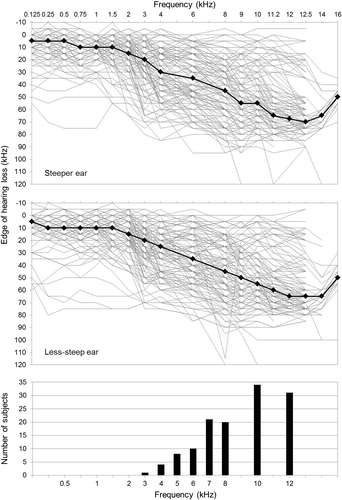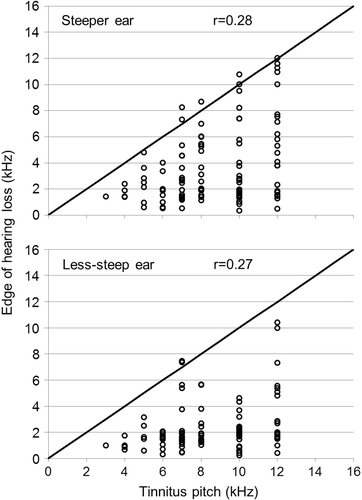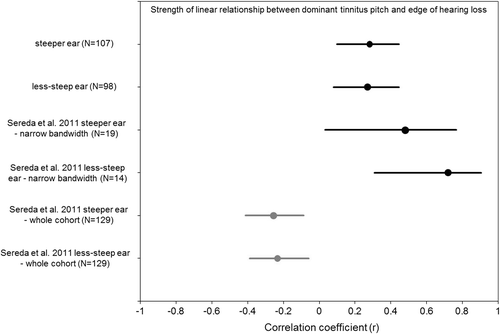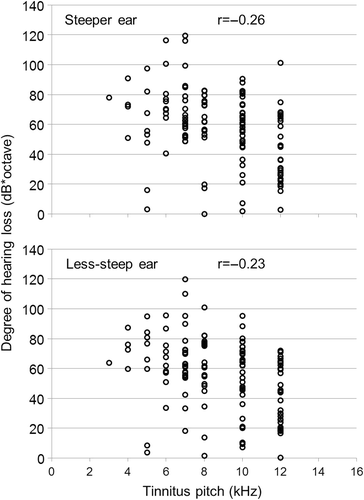Figures & data

Table 1. Summary of audiometric information for included studies.


Table 2. Correlations between dominant tinnitus pitch and audiometric variables. HL = hearing loss.
Table 3. Details of the loadings of each of the eight principal components derived from the principal component analysis onto the original audiometric variables. Components are statistical constructs, but the individual loadings indicate the ‘meaning’ of each one. For example, principal component 1 most strongly represents the edge and the slope of hearing loss.

